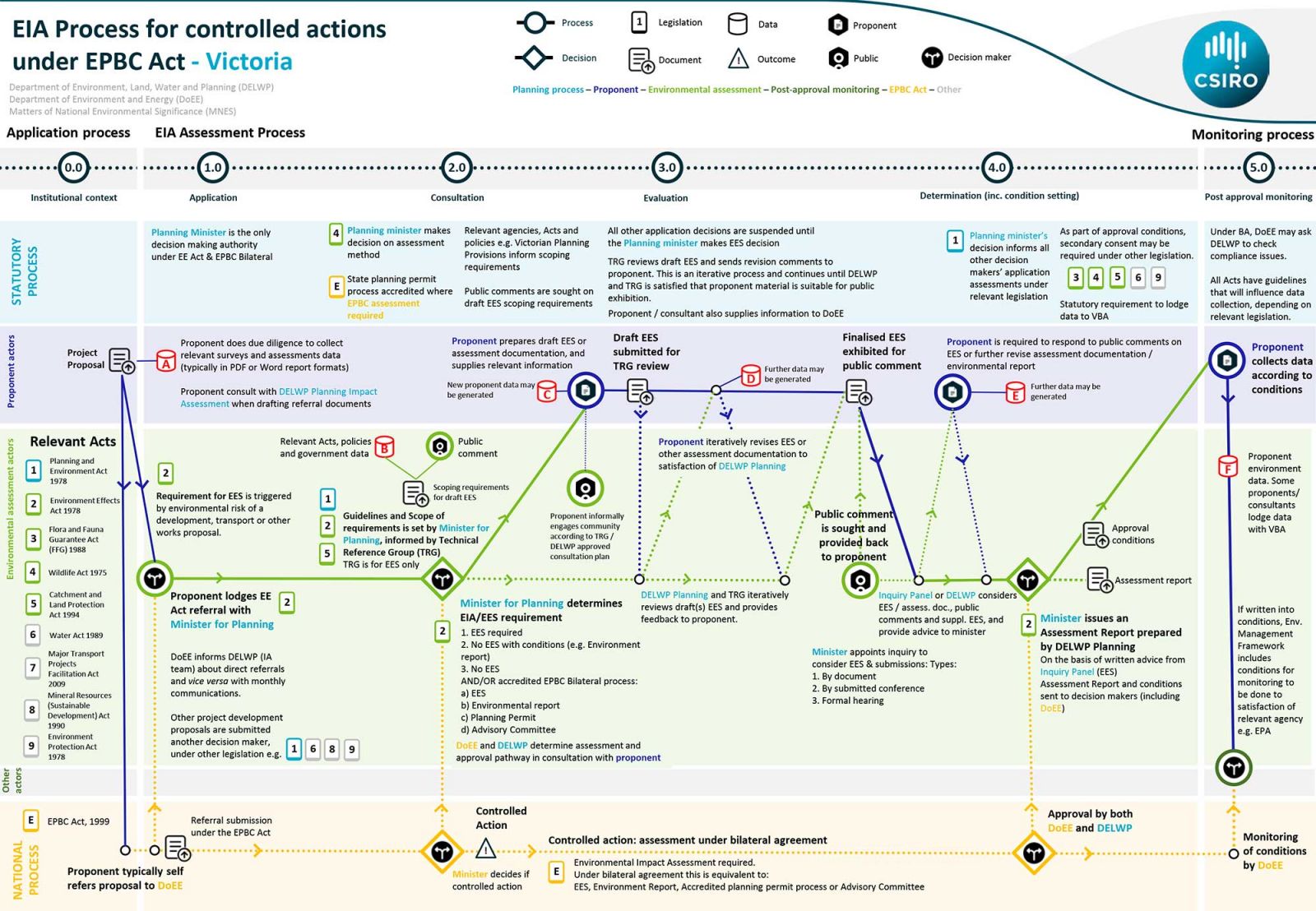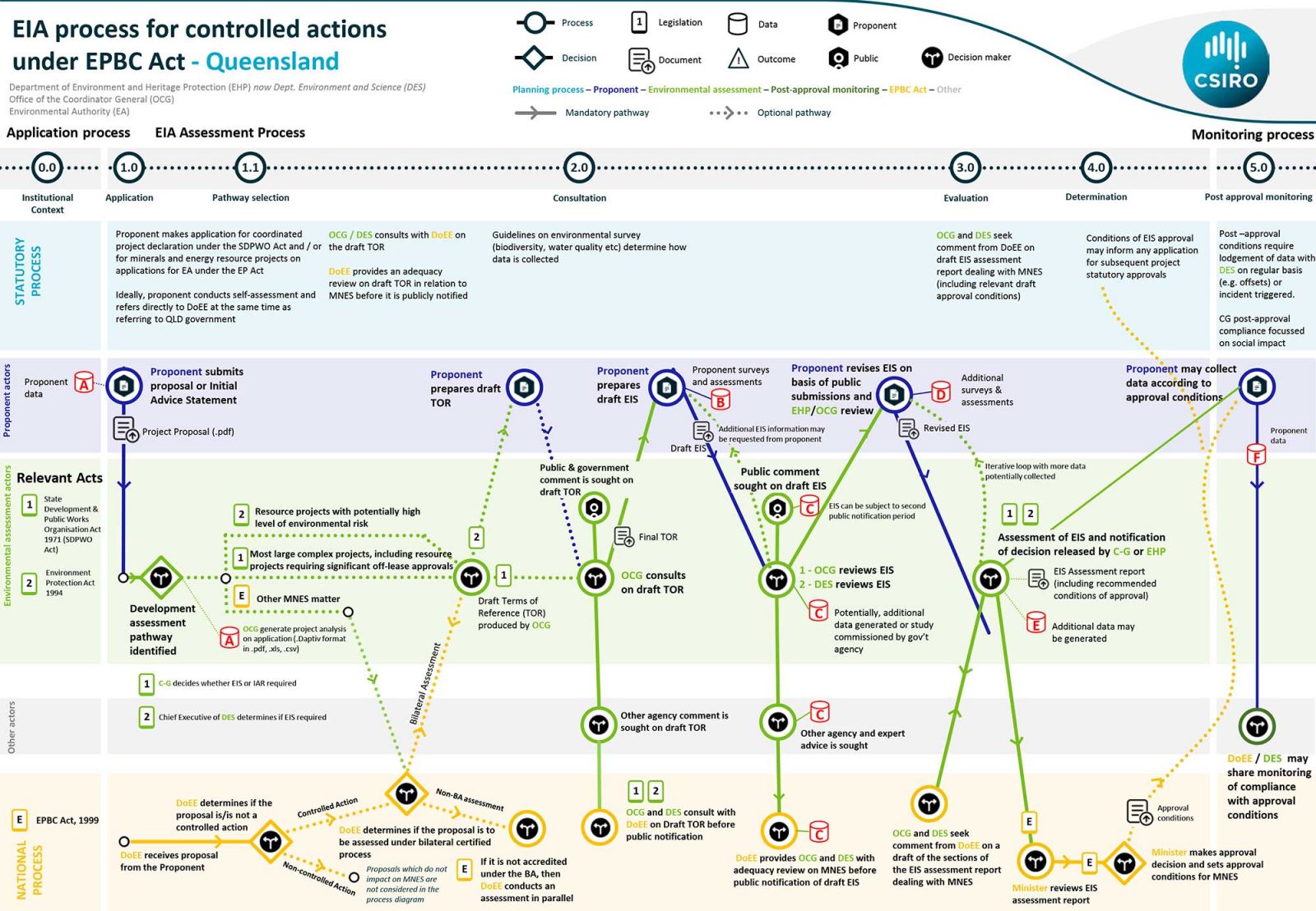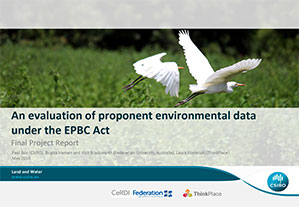

An evaluation of proponent environmental data under the Environment Protection and Biodiversity Conservation (EPBC) Act
This collaborative project between CSIRO Land and Water, CeRDI, and ThinkPlace aimed to explore proponent data generation as part of the referral process under the Commonwealth EPBC Act 1999. The primary goal was to determine the value and nature of environmental impact assessment (EIA) data and their potential for reuse in other areas of government decision making.
Background
The EPBC Act is the key piece of national legislation for the protection of biodiversity and the environment. It is administered by the Australian Government Department of Energy and Environment. Project development proposals that have potential to impact matters listed under the Act are referred to the environment minister for determination. There are nine Matters of National Environmental Significance (MNES); the two most assessed are (1) nationally threatened species and ecological communities, and (2) migratory species.
EPBC referrals usually require field surveys and site assessments to provide quantitative data on potential environmental impacts of a development proposal. In approving development applications, conditions may be attached that require monitoring and reporting on possible post-approval impacts. Documents lodged with the Department as part of the referral, assessment, and monitoring process are based on often significant volumes of data.
The value of proponent data, generated through the EPBC Act EIA and approval process has not been quantified or well described. Furthermore, the degree to which proponent data is captured by state/territory governments is not well documented.
Outcomes
A detailed document review followed by expert engagement with the Department of Environment and Energy staff, and a case study in Western Australia, were undertaken. The findings from the review process were that large volumes of biodiversity data (particularly in relation to threatened species and ecological communities) are collected by proponents and their consultants throughout the EPBC referral, assessment and post-approval monitoring process. However, none of these data were available in structured, machine-readable formats, and at most, only limited references to underlying data contained within PDF (Portable Document Format) documents could be found. The case study revealed that there is often limited reuse value in data collected, and these data are typically not shared with government, due to lack of incentives or requirements to do so. At a state-wide level, the environmental impact assessments (EIA) processes are complex and involve multiple agencies and different assessment pathways depending on the nature of the proposed development. Consequently, maintaining an understanding of the whole EIA process is challenging. Finally, the flow of data into government systems is highly variable across states. Improved processes for proponent data lodgement and the use of data citation to enable data to be accessed and reused, were recommended to address these issues.
 |
| EIA Process for controlled actions under EPBC Act - Victoria
|
 |
| EIA Process for controlled actions under EPBC Act - Queensland |
Approach
The initial stages of this project focused on reviewing a selection of EPBC referral cases to formulate a broad overview of the characteristics of these proposals, and the types of data accessed or generated. Biodiversity data (flora and fauna) represented many new datasets generated, however, no datasets were made available to the Department in structured, machine readable and reusable formats. The second stage of the project focused on conducting a detailed analysis of EPBC referral cases, that represent large and potentially data complex case studies. The findings were compiled into comprehensive documentation that focuses on the value (in terms of accessibility and reuse), extent (spatial, temporal, and taxonomic resolution) and scope (data standards versus data themes) of data generated or required to be generated as part of approval conditions.
-
RESEARCH OUTPUT
The project resulted in two main outputs; a technical report to the Department and summary research report that provides the key processes and insights from the project, plus recommendations for future research and government action.
An evaluation of proponent environmental data under the EPBC Act
This report presents an analysis of environmental data generated and potentially lodged with government, as part of the environmental impact assessment, approval, and monitoring processes under the EPBC Act.
Citation: Box P., Hansen B., Bradsworth, N., and Kostanski L., 2018 An evaluation of proponent environmental data under the EPBC Act. CSIRO Land and Water. https://doi.org/10.25919/5bc8ca2cc633d

-
PARTNERS




